Over the past few months we’ve taken this little show to both Seoul Forest Station and Ttukseom Resort Station and, with Seongsu and Konkuk University both long in the bag, I’d been meaning to make it back to this last stop on the little spit of land wedged between the Han River and the Jungnang Stream (중랑천). I’d also wanted to make it here to wrap up the last little bit of Seoul Forest that we’d left dangling: the Marsh Plants Gardens (습지생태원), which hangs, taglike, off the park’s northwest corner, and which we didn’t cover with the rest of the park since it’s closer to here than to Seoul Forest Station.
This corner of the city, thanks to Seoul Forest and the waterways that pinion it, has a closer relationship to nature than most, and I got a taste of this before I’d even left the elevated station as other commuters and I had to share floor space with a pigeon that had found its way inside. I left Exit 8, outside of which street stalls spilled steam into the cold December air. Above me the elevated rail tracks curved off to the north, heading to a bridge over the Jungnang and on to Hanyang University. This was just a few days before the Korean release of the galactically hyped new Star Wars movie, ‘The Force Awakens,’ and up on the corner of Wangsimni-ro (왕십리로) a sporting goods store was heralding its grand opening with a sidewalk stereo that just happened to be playing a techno remix of the Mos Eisley groove as I walked by. Given that the original Star Wars films haven’t been widely seen in Korea I couldn’t be sure if this was on purpose or just a delightful coincidence.
A few blocks down Seoul Forest-gil (서울숲길) I came to the Marsh Plants Gardens entrance. Near the entrance was the Eco Learning Center (생태학습장), a handsome wood building that serves as a space for education and observation. Though some staffers were having a meeting inside, it was closed to the public for the winter months. Behind the Eco Learning Center was the Environmental Playground (환경놀이터), slides and rope netting with a supposed eco-theme, and, a short ways beyond that, the Open Air Nature Awareness School (야외자연교실), a small amphitheater of tiered benches forming a semi-circle around a dirt stage, with a sandpit and other educational apparatuses dotted nearby.
The rest of Seoul Forest I’d visited during the summer, and the contrast between then and now was stark. As one of the city’s best green spaces, the park was filled with people in August; now, apart from me, there were just three or four old folks out for some exercise. The magpies handily outnumbered people. Summer, of course, had also found the park dressed in a lush green; now the trees were bare and the park’s palette was a continuum of browns and grays. I’ve always found winter marshes as beautiful as their summer counterparts, though. While trees deprived of their foliage can look forlorn, missing their essence, marsh reeds merely seem to mature, trading their green for a dignified khaki and gaining a slightly stooped, feathery top of gray and white. In their ability to become even more handsome as they age, they’re the vegetal equivalent of Paul Newman.
The centerpiece of this part of Seoul Forest is the semi-eponymous Marsh Plants Garden (습지초화원) (‘semi’ in that its Korean name is different but its English one is the same) where reeds and willows surround a small pond. A pair of zigzagging boardwalks stretch over it, and I set out on one of them. The surface of the water had taken on the thinnest sheet of ice, trapping countless leaves from the willows and other overhanging trees and making the pond’s surface look like a carpet, almost walkable. As I wandered down one of the boardwalks I looked across the water and there, on the opposite boardwalk, was a lone orange and white cat trotting casually along. A pair of magpies were flitting along with the cat, periodically alighting on the handrail just two feet above, as if to taunt it. But the cat paid them no mind and continued down the boardwalk until it reached the end and disappeared into the underbrush.
From an elevated spot on the other side of the pond, the one near the entrance, the Bird Observatory (조류관찰대) overlooks the marsh. Not exactly a blind, it’s a pair of wooden screens with a couple of windows through which to view the birds that visit the spot, including, according to signs, parrotbills and gray herons.
Apart from the aforementioned magpies, however, there was little birdlife to be seen around the pond in mid-December. Those with a penchant for waterfowl might be better off going to the Jungnang Stream. Leaving the park I turned onto Wangsimni-ro and followed beneath the Line 2 tracks until I came to the waterway. The Jungnang has the usual bike and walking paths, though when I reached the bridge I found that there was no convenient way to access them from the Ttukseom side; I’d have to cross over to the side near Hanyang University. Momentarily stuck, I looked down from the bridge, and in the water below I saw a flock of hundreds of ducks gathered together – far, far more than I’d ever seen at one time in Seoul. Most of them were just surfing the current. Occasionally one would dip its head in the water to snatch at something or one would take to the air and flap upstream a few dozen meters after the current had dragged it down toward the Han.
Something that we touched on in the Seoul Forest and Ttukseom Resort posts (though, really, you could call it the overarching theme of this blog) is the old and new bumping up against one another in this part of town: Seongsu’s old factories and tech startup offices, old working-class apartments and new riverside high rises. That’s of course no less true around Ttukseom. En route to the Marsh Plant Gardens I passed modest, slightly aged apartment and office buildings in drab colors, built with dull materials. Next to, and sometimes inside these were sharp, painstakingly designed cafes, boutiques, and a restaurant describing its products as ‘craftburgers’ and advertising hand-cut fries and Russian soup. Likewise, on Wangsimni-ro’s west side there was a recycling yard, auto mechanics, and haejangguk restaurants, while the east side’s sidewalk featured an artificial stream and a fountain. There was also a Moto Guzzi dealer and, next to it, a café called Carnaby St. whose sign read ‘EST. 2015.’
Businesses with signs that read ‘Est.’ followed by a year in the 2010s are a curiosity of life in Korea that I’d never been able to wrap my head around. In Western countries, no one would put such a sign on their awning unless they could boast of, I’d say at minimum, a quarter-century of history. The entire point of the ‘Est.’ is to advertise longevity, implying experience, tradition, and the reliability that goes with those things. Adding ‘Est. 2013’ or some such date to a sign had always struck me as simply a misguided attempt by Korean businesses to add a thin sheen of European ‘class’ to their establishment, the equivalent of hanging up a picture of the Trevi Fountain while still serving the pasta carbonara with a side of pickles.
But now, suddenly, I got it, and my moment of understanding had much to do with the absurdity of the date following Carnaby St.’s ‘Est.’, a date that wasn’t even in the past. Suddenly, it seemed obvious. While Koreans admire and hold Europe’s traditions and refinement in high regard, they’re also fanatical devotees of the new, and advertising that newness doesn’t, in fact, send a message of dilettante-ism, as it might to a Westerner. It’s the complete opposite. It actually signifies refinement and culture. While a decades-old date on one of those haejangguk restaurants would be seen as a good thing, the same date on a café would be seen – by both Korean and Westerner alike – as a powerful argument to stay away. Coffee, good coffee, anyways, is a new thing in the country, and I think I’m like most other foreigners and young Koreans in that I don’t trust anyone over 50 or any café more than 10 years old to make me a half-decent latte (the wonderful Hakrim Dabang excepted). In Ttukseom I’ll go to Carnaby St. for my coffee until I find a place that was Est. 2016.
That emphasis on its young age is likely extra persuasive in Carnaby St.’s neighborhood, as the café is surrounded by alleys of old, sometimes decrepit little homes and by businesses of the sort that advertise ‘wire cutting.’ It’s doubtful that the denizens of those places are customers, but the young creatives who’ve moved into the same neighborhood, taken over old buildings, and opened up things like the fashion co-working space I came across probably are.
The rest of the neighborhood around and east of the station is a similar mottle. Outside Exit 1 are bike parking lockers and, a bit further up, a rack of the city’s public rental bikes. Next to Exit 2 is Sangwon Children’s Park (상원어린이공원), with the usual assortment of benches, playground equipment, and exercise machines. Near Exit 4, Sangwon-gil (상원길) is your typical middle-class commercial street lined with phone shops, fruit stands, and fried chicken joints. The side streets just off it were home to izakayas, banchan shops, and a business (closed for the moment at least) whose sign advertised ‘www.I’mtaller.com’. Just off those side streets, though, and it was back to Seongsu’s industrial side, as I passed a textile factory and a place that made window film. South of the station it was the same curious yet expected mix so emblematic of this part of Seoul. Here, a zipper factory. There, a homemade pie shop. Here, a business that made springs. There, a café advertising bottles of Ballast Point beer. Here, a business that’s been around for decades. There, one just Est.
Seoul Forest Marsh Plants Gardens (습지생태원)
Exit 8
Straight on Achasan-ro (아차산로), continue onto Seoul Forest-gil (서울숲길)
Sangwon Children’s Park (상원어린이공원)
Exit 2
U-turn out of the exit
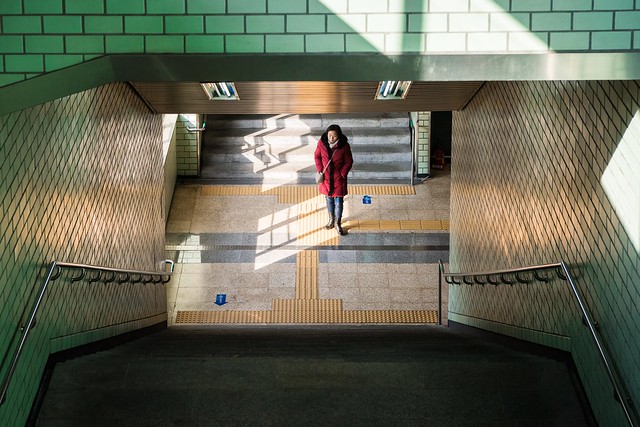
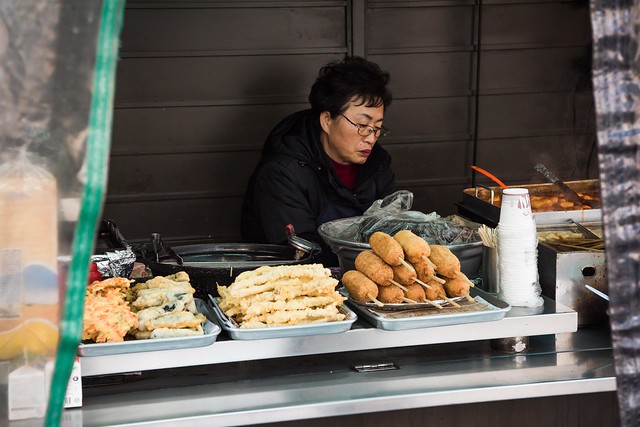
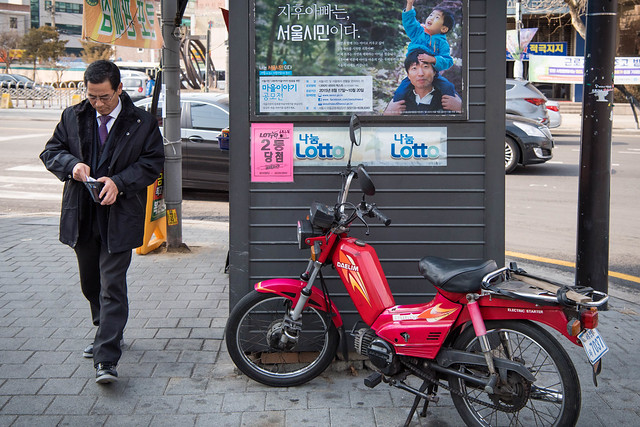


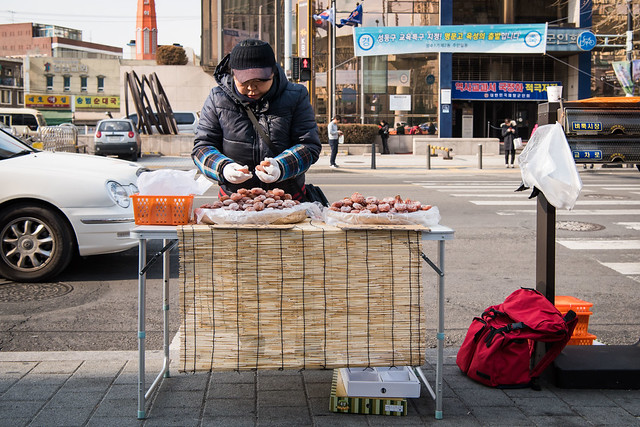

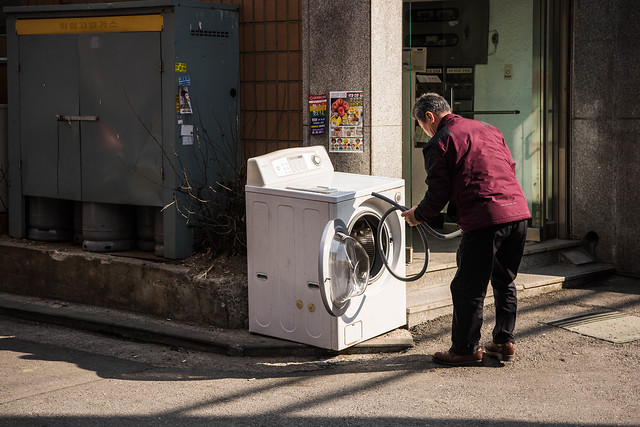
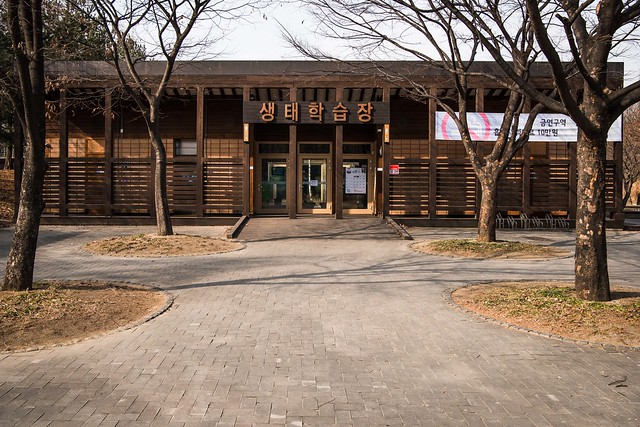


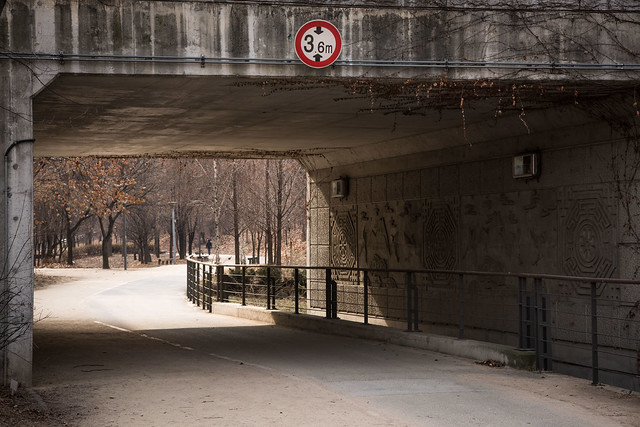

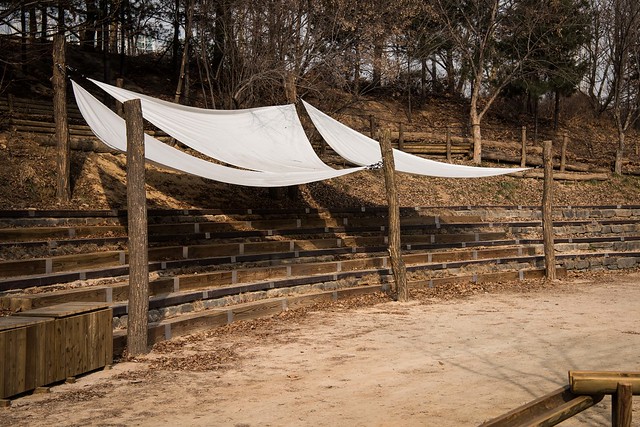



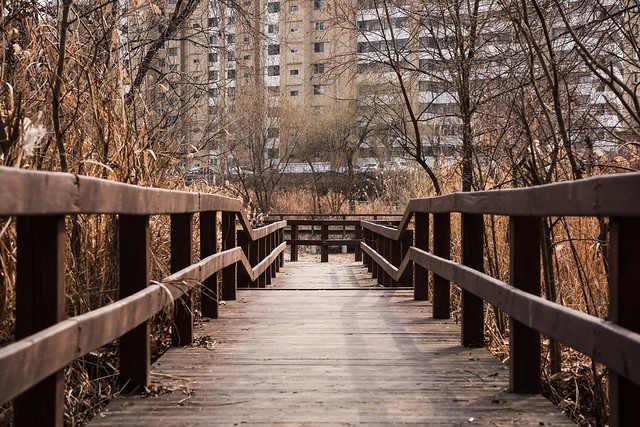


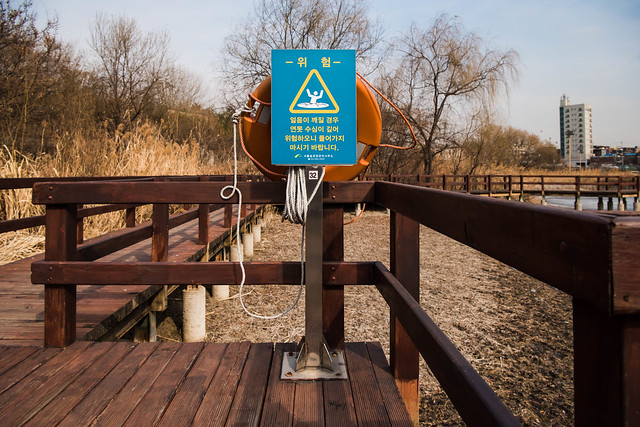






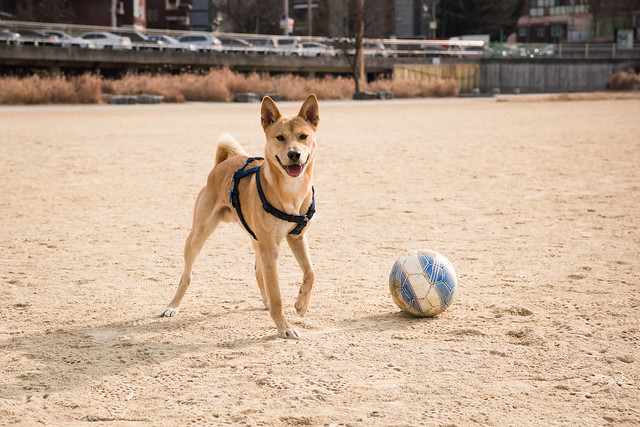








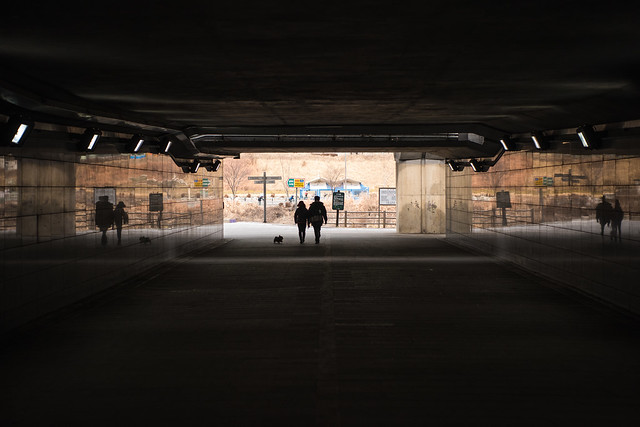
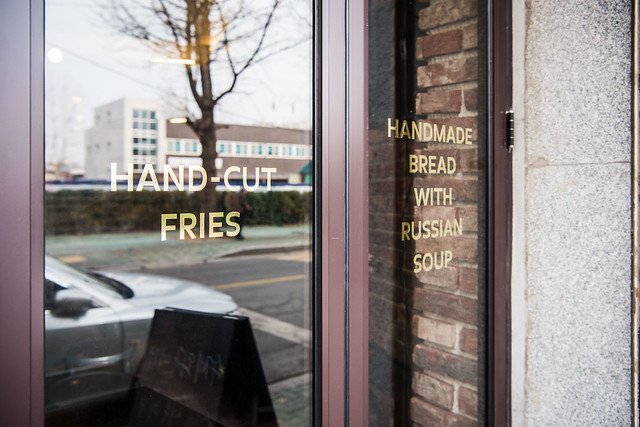


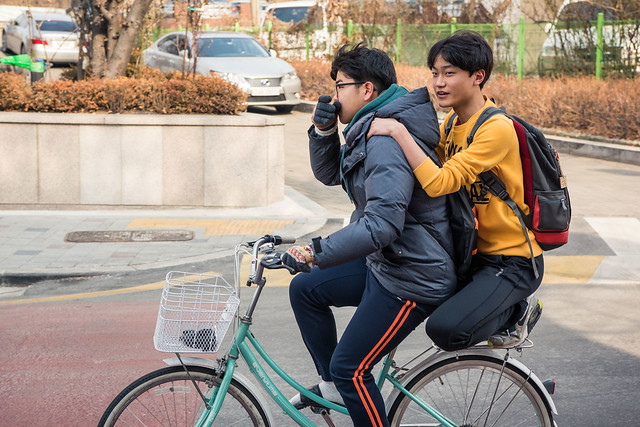


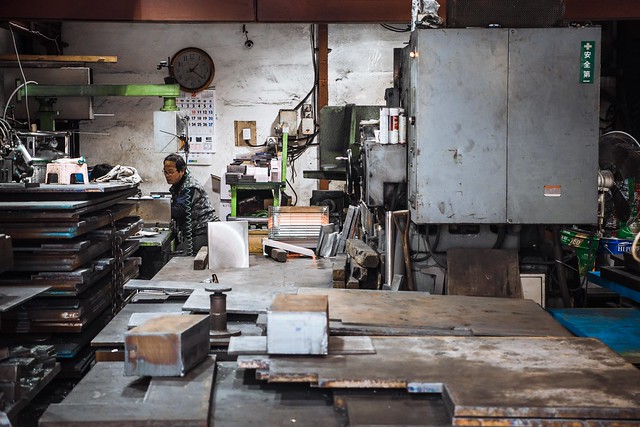
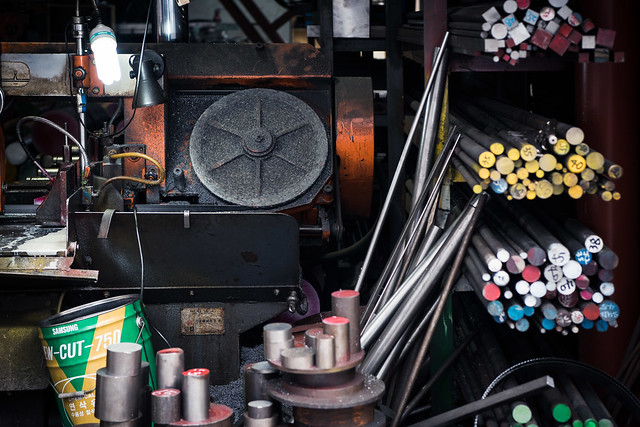




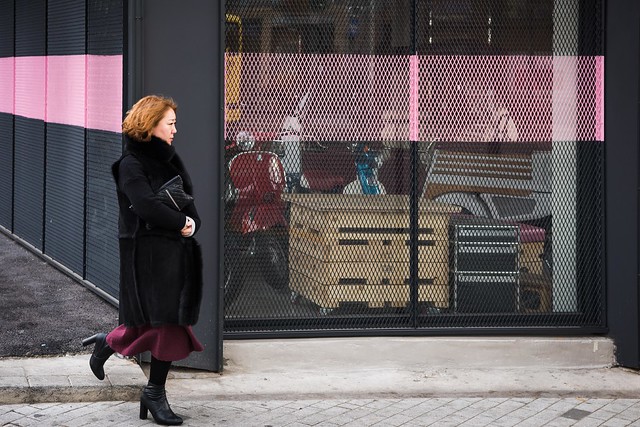
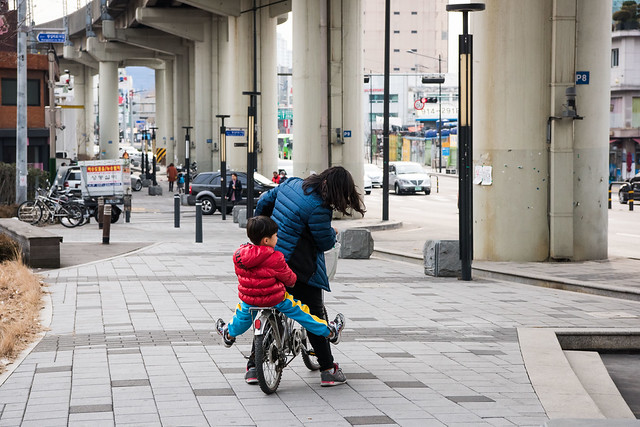

















I love your photos. Your blog is so helpful especially for someone who lives outside Seoul. I really enjoyed your insights on established dates. It’s something we laugh at here but you are right on.
Thanks Lindsy! Seoul has a remarkable history and it makes for some strange story-telling!
Hello, can you please let me know which exit number of the subway nearest to Carnaby St cafe? Thanks so much! Btw, you have amazing photos. Will be using your blog as my guide when I visit Seoul next month 😊
Thanks Annamarie! Exit 1. Follow the overhead tracks as they curve towards the river and the cafe will be on your right.
Can I know how to go carnaby street for coffee? Do you have the address? Which subway station to stop and which exit to go?
Ttukseom Station Exit 1. Follow the overhead tracks as they curve towards the river and the cafe will be on your right.
Do you have the address of the cafe? Can’t locate it on google map 🙂 Thanks! By the way, great photos and great post!
Don’t have the exact address, sorry. But if you follow the directions in the post and comments you’ll be able to get there no problem.
Hi! Thanks for the great post, great photos too. Anyhow, do you have the address of Carnaby street cafe. I can’t locate it on google map. Tried following your direction but it’s not showing up on google map. Saving it for my next trip to Korea 🙂 Thanks alot!
Really nice photos.. Would like to venture that area when I visit in December. From Ttukseom station how do we reach the Carnaby Street Est. 2015 coffee shop?
Thanks! Exit 1. Follow the overhead tracks as they curve towards the river and the cafe will be on your right.
Thanks sooo much! Sound fun venturing that area… Hopefully, I won’t get lost..LOL
Omg! The ahjumma I chatted with (2nd photo) is there! ✨ She’s a korean drama fan haha
These are some amazing photos! What camera do you use? I love that your blog is centered around the subway lines and not just neighborhoods, great for visitors like me! Will definitely have to check out the spots you mentioned here!
This is a very good and detailed article about Ttukseom Station.
Perhaps could our navigation system for the Seoul subway be interesting as well:
https://www.metrocazar.com/seoul/